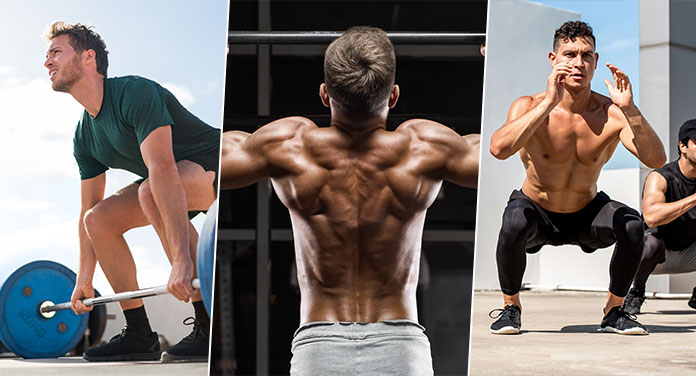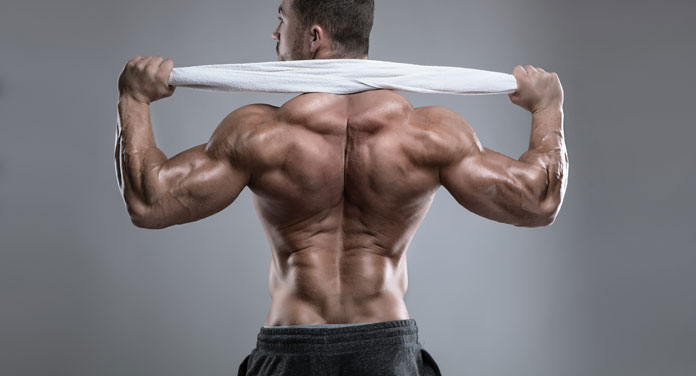How To Reduce Body Fat And Gain Muscle. With summer fast approaching, many have an annual desire to turn the fat reserves they accumulated over the winter into muscle. Transforming your body is no easy task and requires changing your body composition by burning fat and building muscle at the same time. This is a different approach to health and fitness than simply wanting to lose weight.
At first glance, the project seems impossible: In order to reduce body fat, you need a calorie deficit. However, to build muscle, you need to eat more calories than you burn. At least that’s the popular theory. If you plan your diet and exercise well, you can definitely lose body fat and build muscle at the same time.
Your Body Composition
In order to understand the connections, it makes sense to deal with the biological processes in your body and to find out about important basics.
A first look before starting a workout aims to find out more about how much muscle mass you already have. Your body composition describes, among other things, the ratio of fat mass to muscle mass. The body fat percentage (BFA) is just one part of many. Because your lean mass naturally also includes muscles, bones, ligaments, tendons, organs, other tissues, and water.
There are various methods of determining body fat percentage. The most accurate and also cheapest works with a body fat caliper. You don’t need overpriced body fat scales.
Your desired physique transformation is to change the ratio of fat mass to muscle mass – meaning you want to lose body fat and gain muscle mass at the same time. Your body weight doesn’t play a particularly important role here. You may end up maintaining your weight or even gaining weight because muscle mass weighs more than body fat.
The analysis of body composition is therefore a good starting point for setting up an individual training plan. With regular checks, you can also precisely identify and document your development and progress.
Muscle Tissue Versus Fat Tissue
Muscle tissue is denser than fat tissue: the more muscle mass you gain, the more you weigh, even if you lose fat at the same time. A look at the scale is therefore deceptive and does not offer any reliable information as to whether you have already come closer to your goal and whether you have been able to build muscle mass and lose body fat.
What changes instead of weight is your physique. Ideally, during your transformation, you will notice changes in your body, such as an overall tighter appearance or a different fit of your clothes.
You should give your body the time it needs for such a change. The slow, steady process of transformation offers sustainable results. Keep in mind that humans are creatures of habit, even when it comes to various metabolic processes. The body first has to get used to changes – for example through more physical activity or an adapted diet. Only over time does the organism adapt to the new circumstances.
The Right Energy Supply
The next step toward your dream body is to determine your calorie basal metabolic rate. There are different methods here too. To lose body fat, you need to eat fewer calories than you burn. However, that doesn’t mean you have to spend countless hours doing intense cardio just to keep eating to your heart’s content. Much more important is the already mentioned composition of your body.
In order to use the muscles in your body, it needs energy. So if you increase your muscle mass, this also increases your basal metabolic rate. To prevent muscle loss and avoid starvation and keep your metabolism active, you should maintain a moderate calorie deficit of 300-500 calories. The risk of a yo-yo effect is also lower here.
To build muscle efficiently, try to focus on two main factors: strength training and your protein intake. Strength training is important to stimulate the muscles to form new cells. In order to build these cells, your body needs an important building material: proteins. While numerous other macronutrients are also important, protein is particularly crucial for muscle building. Without enough protein, your body will have trouble repairing muscle tissue that is used during strength training. Your protein intake should range between 1.6 to 3.1g per kilogram of body weight.
Studies also show that a high-protein diet can help with fat loss and muscle building at the same time. Consuming more protein than usual when in a calorie deficit can help maintain muscle mass. You can consume protein – i.e. protein – in many different ways. On the one hand, you can pay attention to protein-rich ingredients in your diet. These include, for example, the following foods:
- Meat (especially poultry or beef)
- fish (e.g. salmon)
- eggs
- Legumes such as beans, peas, or lentils
- Products made from soy
- Milk or milk products such as quark
- Nuts (e.g. pine nuts, peanuts, or almonds)
- Whole grain products like oatmeal
In addition, there is the possibility of specifically consuming protein via protein supplements – for example in the form of shakes made from protein powder.
This Is How You Get Into Training

As already mentioned, don’t expect miracles in a short time. A long-term training plan will help you to get closer to your goal step by step and to put your body under a healthy load. Depending on how to fit you already are, you then determine what the individual training sessions look like. Make sure you have enough variety. In addition to the typical machine and weight training, you can also try isometric training, for example.
It makes sense not to overwhelm yourself, but also not to make the training too easy. If the units are too difficult for you, you can quickly lose interest. Exercising too lightly can have the same effect. So make sure that the exercises are just the right challenge for you.
A second important point that will help you achieve your goal is to establish the training as a regular routine:
A small digression on establishing new habits
- Only do one thing at a time.
- Formulate concrete, feasible (!) goals.
- Take your time.
- Track your progress and keep yourself motivated.
- Find partners to keep at it.
- Change your goal if you haven’t been successful after three months – maybe you’ve taken on too much or the habit didn’t suit you? It’s ok to change course.
Complement Strength Training With Cardio

The focus on strength training is the most important way to build muscle mass, along with considering the right diet and paying attention to the calorie deficit. This burns as many calories as possible and stimulates your metabolism. You should constantly provide a training stimulus for your muscles – i.e. continuously increase the intensity of the exercises. This is how you avoid a yo-yo effect.
If you’ve gotten to the point where you regularly schedule more exercise time—say, more than 4 to 5 hours —then it makes sense to add cardio sessions to your exercise plan, which has a number of benefits. The background is as follows: Sufficiently long rest periods between the loads are necessary for efficient muscle building. If the intervals between training sessions are too short, this can inhibit training success because your body is still weak. In the worst case, the risk of injury also increases.
In order to be able to train more, you can do endurance training instead of a strong unit. This can be cycling or spinning, jogging or swimming. With the additional cardio training, you can also provide more variety and fun. This will help keep you motivated – and you can still burn calories in the process.
In principle, various endurance disciplines also put a strain on other muscle groups that are often not addressed in targeted strength training. Overall, cardio training naturally supports your cardiovascular system. In the end, you will also benefit from this during strength exercises through better basic fitness.





